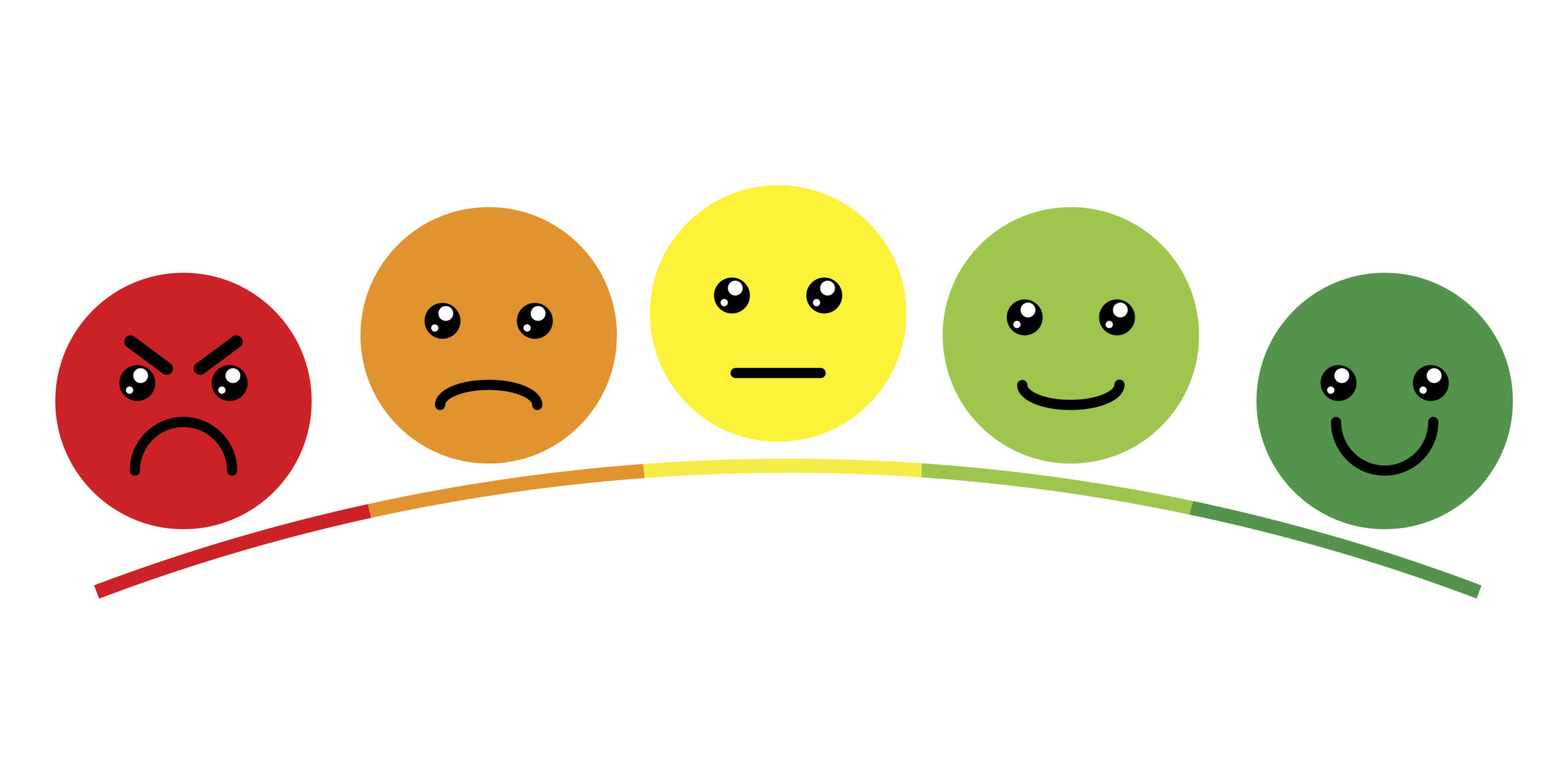We all experience moments when our heart begins racing, our palms get sweaty, and our brain fogs over.
It could have been triggered by the immense traffic on our way to the office.
Or perhaps a meeting with a colleague or team that didn’t go the way we planned.
Or perhaps our friends didn’t share our opinion on a controversial topic.
When we are in a reactive state, our mind is racing to process what just happened, and our feelings of frustration, anger, hurt, and shame begin bubbling to the surface.
In these situations, we may think to ourselves:
Why is that driver so insensitive? I am late for an important meeting and they’re making it worse.
Why did this meeting get out of hand? I feel like this meeting was a waste of my time.
How do my friends think this way? This doesn’t even make sense.
As a result, we freeze or snap. We suddenly can’t seem to find the right words to express ourselves. Our body feels like it’s crashing on us. And our heart is sure to beat a path out of our chest.
It’s no longer about what’s happening out there. Afterall, we’re overwhelmed by the stress response resulting from these external events.
What we’re experiencing is the effects of our bodies natural fight-or-flight response and we are overcome by the urge to react.
And react we do… We raise our voice, say words we later regret, or we might go into an unhealthy silence and suppress our emotions. In both cases, whether we react or withdraw, we risk damaging our relationships with others.
But what if we can manage our reactivity by using a simple 6-step framework to process our emotions, calm our body, and deepen our connection with others?
I developed the BELOVE Response by working with individuals guiding them to rise above instinctual reactions to situations and respond.
By mastering the BELOVE response, they have been able to transform their approach in dealing with triggers, thereby enhancing their wellbeing in the process.
Where Does Reactivity Come From?
On a day when everything is going smoothly, it’s easy to be pleasant, calm, and collected. We think clearly, manage our emotions well, and express ourselves in a way that others can understand.
However, when your fight-or-flight mode is triggered, you suddenly find yourself reacting in the same way cavemen did when faced with a sabertooth tiger—attack or flee.
That’s because the fight-or-flight response is an evolutionary defense mechanism that’s meant to keep us alive and ensure our survival. It usually kicks in when we sense a physical or psychological threat in our surroundings or when we experience stress and uncertainty.
It ensures that we are strong and fast enough to deal with the situation. It does this by triggering the release of hormones that increase our heart rate and breathing rate. It also tenses up our muscles to prepare them for quick action.
While this was exactly what our early ancestors needed to survive, the fight-or-flight response is not helpful in our day-to-day lives at home or at work.
Just think of these situations and imagine how you would feel if you were to experience them:
- You observe behavior that’s unfamiliar, unacceptable, or uncomfortable
- You hear something that you perceive is an act against you by another
- You smell something that reminds you of an awful memory from your past that you’d rather forget
- You feel like your values are not being honored or your boundaries are being overstepped
- You expect a certain response, behavior, or outcome from someone but get quite the opposite
Between the physical and emotional caused by a fight-or-flight response, you may find yourself reacting in ways you normally wouldn’t.
With that said, when you are experiencing the fight-or-flight response, it feels like you have no control over your reactions. However, with practice and through applying the BELOVE response, you can gain clarity on the situation, thereby empowering yourself to make conscious decisions.
Step into Balance with the BELOVE response
The BELOVE response is like an antidote to the effects of the fight-or-flight response.
It’s meant to slow our heart rate and breathing rate so we can think more clearly. It also offers us the tools to uncover the real cause of the situation. In this way, we are free to respond more effectively to the external events causing us stress.
This is especially useful at work, where stress is inevitable and the actions of our colleagues can trigger our reactions.
So, to maintain your performance and enhance team synergy, practice this 6-step BELOVE response when triggered:
1. Breathe
When you get triggered, your breathing rate changes. You may notice that you’re holding your breath, having shallow breathing, or breathing quickly. This deprives your brain of the precious oxygen it needs to process the situation.
So, begin by noticing your breath as it is and gently inhale and exhale consciously through your nose. By inhaling to the count of 4, holding to the count of 4 and exhaling to the count of 4, your breathing will return to normal. This will signal your brain that you are not in danger, allowing you to remain calm and take charge.
Remember: You got this!

2. Embrace
Many times, when we are triggered, we either suppress and deny our emotions or we become those emotions and erupt.
As you are slowing down with your breath, embrace your emotions as they are. It’s completely normal to have emotions. It’s part of the human experience. Instead of suppressing or denying how you feel, acknowledge, name and accept your emotions without judgment.
They’re a sign that something could be better in your environment.
3. Listen
In moments of stress, listen closely to your inner narrative.
When triggered, our inner narrative tends to create a story based on memories, experiences, and observations from our past. Consciously listen to the inner narrative and really hear the story.
Does it sound true?
Is our colleague so thoughtless?
Is our partner that unfeeling?
By challenging yourself, you may find the story to be quite untrue.
With that realization in mind, you can bring your attention outward and listen with an open mind to what your colleague is saying. Listen with intention to understand where they are coming from so you can have a better grasp of the situation.

4. Observe
Observe the sensations in your body and how your inner experience is manifesting in your body.
Emotions are translated into sensations in the body. Observe where you’re feeling a physical response to your emotional state. Is it in your stomach, head, or chest? By being present and bringing your attention to your inner experience, you can help comfort your emotions and relax your body.
By observing your environment, you may come to see that your colleague has been triggered as well. Acknowledge that in this present moment, both of you may have lost your connection to your balance. That’s absolutely ok.
By connecting with your experience, you can extend that kindness to your peer as well.
5. Values
Reactivity usually happens when we feel one of our values has not been honored. When we uphold values like honesty, courage, or promptness, we expect others to uphold these values in the same way we do. When it appears like they do not, we may get triggered—we feel upset, uncomfortable, or offended.
In those moments, take the time to get in touch with your values and try to seek out the values held by others. Curiously explore which value feels compromised and needs to be expressed. By naming the value, you get to the root of the challenge rather than get carried away by the stress response.
Remember, values are influenced by culture, experiences, and personal understandings, so choose to communicate instead of taking it personally.
6. Express
Now that you have identified which of your values was not honored, it’s time to express your needs from a place of your values instead of charged emotions.
Could it be that you would like more connection, recognition, or appreciation?
Are you feeling overwhelmed and could use some additional support from your team?
Remember to express yourself in alignment with your values. For example, if your values include respect, honesty, and compassion, then hold these values close when you express yourself.
We gain more by connecting and acting from a place of our values than being reactive to a stressful situation.
With a few conscious breaths, love in our heart, and clarity in our mind, we realize that no matter what the present looks like…All is well.
